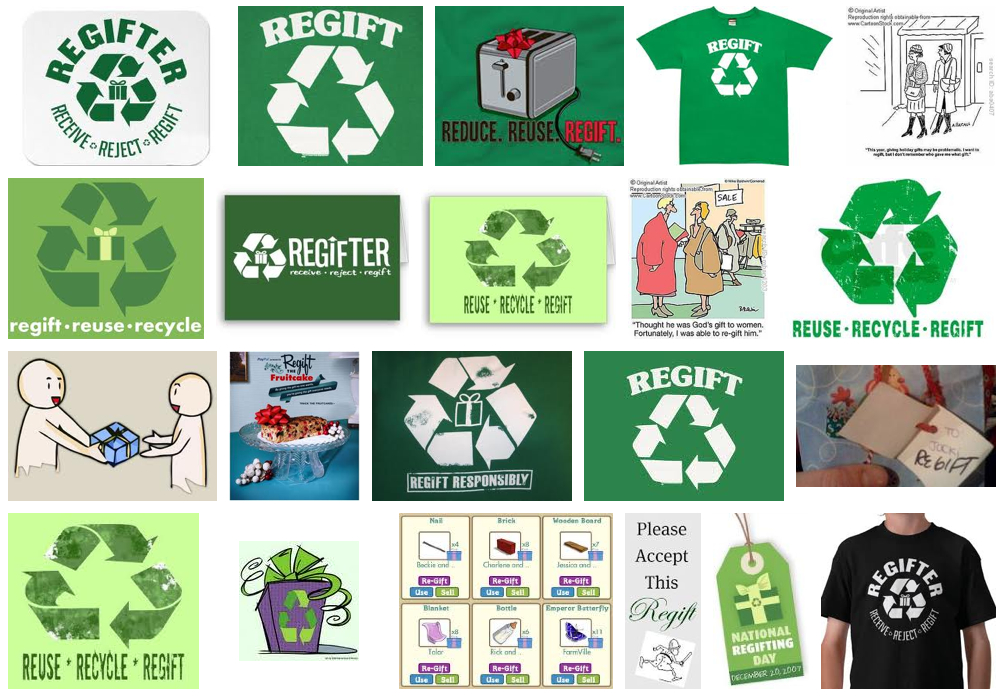‘Tis the season to buy, give, receive and “re-gift” mostly useless and unwanted “stuff”. That’s how many economists would characterize these days of retail madness. Matthew Yglesias over a Slate ponders a more efficient way to re-distribute wealth.
[div class=attrib]From Slate:[end-div]
Christmas is not the most wonderful time of the year for economists. The holiday spirit is puzzlingly difficult to model: It plays havoc with the notion of rational utility-maximization. There’s so much waste! Price-insensitive travelers pack airports beyond capacity on Dec. 24 only to leave planes empty on Christmas Day. Even worse are the gifts, which represent an abandonment of our efficient system of monetary exchange in favor of a semi-barbaric form of bartering.
Still, even the most rational and Scroogey of economists must concede that gift-giving is clearly here to stay. What’s needed is a bit of advice: What can economics tell us about efficient gifting so that your loved ones get the most bang for your buck?
We need to start with the basic problem of gift-giving and barter in general: preference heterogeneity. Different people, in other words, want different stuff and they value it differently.
In a system of monetary exchange, everything has more or less one price. In that sense, we can say that a Lexus or a pile of coconuts is “worth” a certain amount: its market price. But I, personally, would have little use for a Lexus. I live in an apartment building near a Metro station and above a supermarket; I walk to work; and driving up to New York to visit my family is much less practical than taking a bus or a train. So while of course I won’t complain if you buy me a Lexus, its value to me will be low relative to its market price. Similarly, I don’t like coconuts and I’m not on the verge of starvation. If you dump a pile of coconuts in my living room, all you’re doing is creating a hassle for me. The market price of coconuts is low, but the utility I would derive from a gift of coconuts is actually negative.
In the case of the Lexus, the sensible thing for me to do would be to sell the car. But this would be a bit of a hassle and would doubtless leave me with less money in my pocket than you spent.
This gap between what something is worth to me and what it actually costs is “deadweight loss.” The deadweight loss can be thought of in monetary terms, or you might think of it as the hassle involved in returning something for store credit. It’s the gap in usefulness between a $20 gift certificate to the Olive Garden and a $20 bill that could, among other things, be used to buy $20 worth of food at Olive Garden. Research suggests that there’s quite a lot of deadweight loss during the holiday season. Joel Waldfogel’s classic paper (later expanded into a short book) suggests that gift exchange carries with it an average deadweight loss of 10 percent to a third of the value of the gifts. The National Retail Federation is projecting total holiday spending of more than $460 billion, implying $46-$152 billion worth of holiday wastage, potentially equivalent to an entire year’s worth of output from Iowa.
Partially rescuing Christmas is the reality that a lot of gift-giving isn’t exchange at all. Rather, it’s a kind of Robin Hood transfer in which we take resources from (relatively) rich parents and grandparents and give them to kids with little or no income. This is welfare enhancing for the same reason that redistributive taxation is welfare enhancing: People with less money need the stuff more.
[div class=attrib]Read the entire article here.[end-div]

